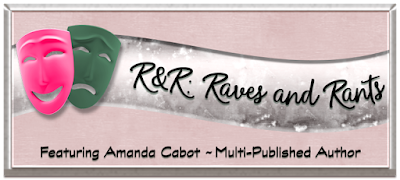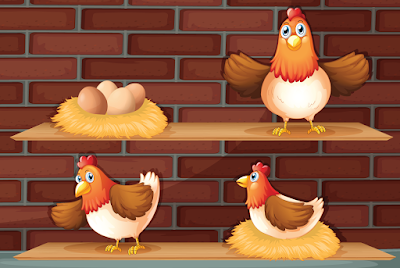R&R: Raves and Rants For November ~ The Truth About Lies

The Truth About Lies
If you thought we were going to talk about falsehoods today, I’m afraid you’re going to be disappointed. No fibs are involved; we’re not even going to discuss the verb that means to tell a falsehood. Instead, we’re going to explore two verbs that I’ve seen misused so often that I no longer want to scream when I see the mistakes. Now I simply nod and say, “Oh, yeah. That mistake. Again .” As you’ve probably guessed, the verbs that are the subject of this month’s rant are “to lie” as in “to recline,” and “to lay” as in “to place something somewhere.”
Warning: this next sentence may make you roll your eyes unless you’re a grammarian, but it’s a necessary one. “To lay” is a transitive verb; “to lie” is intransitive. What’s the difference? A transitive verb requires an object. Not only does an intransitive verb not require an object, but it’s incorrect if used with one.
Here’s an example. Chickens lay eggs, then lie on the straw. See the difference? Of course, you do.

The confusion normally occurs when dealing with the past and past perfect tenses. If you look at this chart, you can see why some people make mistakes.
Infinitive Present Past Past Perfect To lie Lie Lay Lain To lay Lay Laid Laid
No one ever said English was an easy language to learn, and the fact that the past tense of the intransitive verb (“to lie”) is the same as the present tense of the transitive one (“to lay”) proves that.
Using that chart, what’s your assessment of this sentence?
She gazed at the flowers she had lain on the table.
If you shuddered and said that “lain” should have been “laid,” you passed the test.
What about this one?
At the end of the day, he had been exhausted and had laid on the bed.
Another error! He didn’t lay anything on the bed. Instead, he was the one lying on it, so “laid” should have been “lain.”
How would you write that sentence using the past tense rather than the past perfect?
If you said, “At the end of the day, he was exhausted and lay on the bed,” you’d be correct.
Let’s say we have a character who’s exhausted by the simple action of placing a rose on a table. Here’s how we’d describe her actions.

Present Tense: I lay the single rose on the table, then lie on the fainting couch.Past Tense: I laid the single rose on the table, then lay on the fainting couch.Past Perfect Tense: I have laid a single rose on the table more times than I can count, and each time I have lain on the fainting couch as soon as I finished.

Clear? I hope so. I also hope you’ll come back next month when we discuss the common comma.
~Amanda
 A lifetime of reading and writing, not to mention a host of teachers who believed that good grammar was one of the essentials of life, have given Amanda Cabot such firm opinions about the printed word that I asked her to share some with us in her Raves and Rants posts. Although her working career was in Information Technology, Amanda achieved her dream of selling her first novel before her thirtieth birthday and is now the author of more than thirty novels as well as a number of books and articles for Information Technology professionals.
A lifetime of reading and writing, not to mention a host of teachers who believed that good grammar was one of the essentials of life, have given Amanda Cabot such firm opinions about the printed word that I asked her to share some with us in her Raves and Rants posts. Although her working career was in Information Technology, Amanda achieved her dream of selling her first novel before her thirtieth birthday and is now the author of more than thirty novels as well as a number of books and articles for Information Technology professionals.

Her most recent release is A Borrowed Dream the second of the Cimarron Creek trilogy.
Find all of Amanda's books, newsletter info and social media links here.

Tweet
Published on November 11, 2018 23:30
No comments have been added yet.



